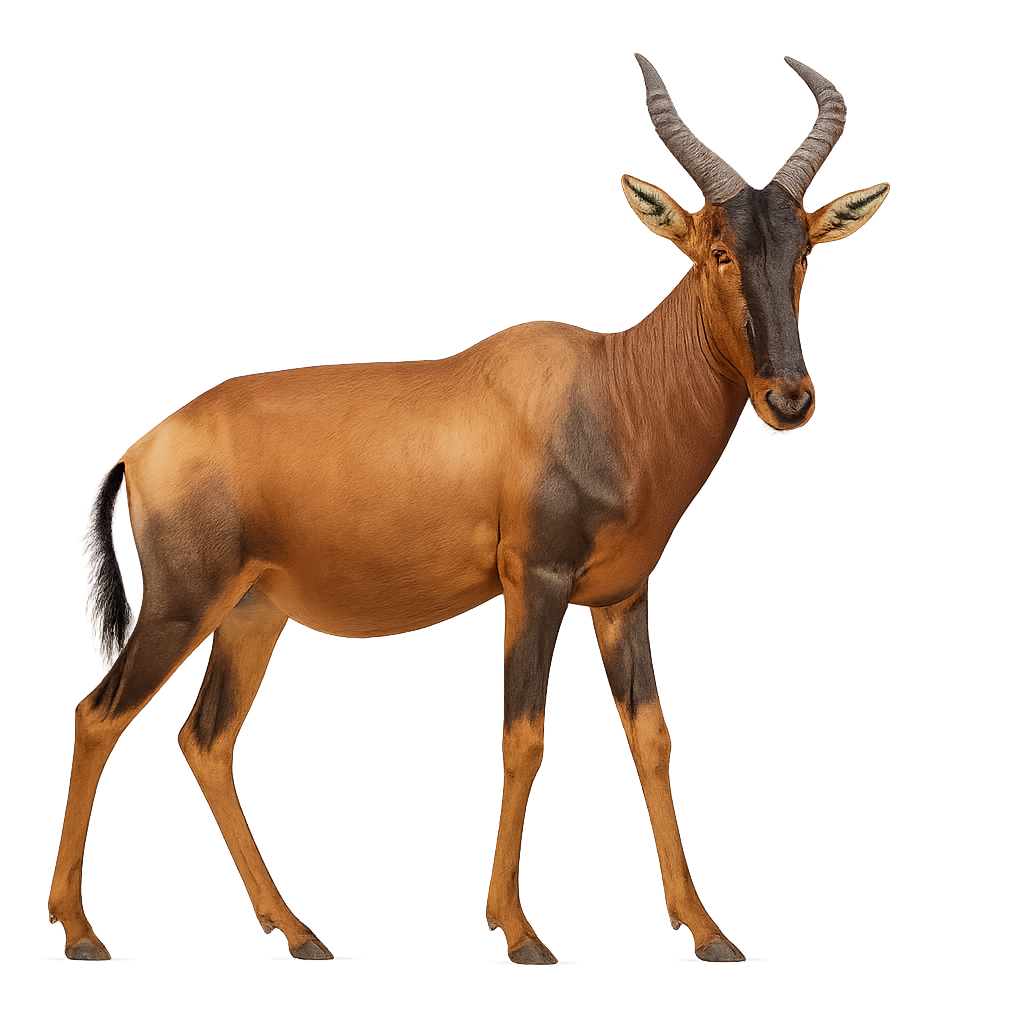Your wildlife photography guide.
Explore the hartebeest in detail, study its behavior, prepare your shots.
Where to observe and photograph the hartebeest in the wild
Learn where and when to spot the hartebeest in the wild, how to identify the species based on distinctive features, and what natural environments it inhabits. The WildlifePhotographer app offers tailored photography tips that reflect the hartebeest’s behavior, helping you capture better wildlife images. Explore the full species profile for key information including description, habitat, active periods, and approach techniques.
Hartebeest
Scientific name: Alcelaphus buselaphus

IUCN Status: Least Concern
Family: BOVIDAE
Group: Mammals
Sensitivity to human approach: Shy
Minimum approach distance: 50 m
Rut period: March to April
Gestation: 240-255 jours
Births: October to December
Habitat:
Dry savannas and open plains
Activity period :
Primarily active during the day, with peak activity in the morning and late afternoon.
Identification and description:
The Hartebeest is a medium-sized antelope, easily recognized by its slender body, long legs, and slightly curved horns. It primarily inhabits the savannas and open plains of North and West Africa, where it forms large herds. The Hartebeest feeds mainly on grasses and low vegetation, and it is particularly well adapted to life in arid and semi-arid environments.
This species is mainly active at dawn and dusk, avoiding the intense heat of the day. The Hartebeest is threatened by habitat loss due to agriculture and hunting, and although conservation efforts have been made, its population remains vulnerable. It is listed as "Near Threatened" on the IUCN Red List.
Recommended lens:
300 mm – adjust based on distance, desired framing (portrait or habitat), and approach conditions.
Photography tips:
Approach slowly and discreetly, using a telephoto lens to avoid disturbing the kudu, a sensitive and reactive animal that can move away quickly if disturbed.
Photograph early in the morning or late in the afternoon, when the light is soft and the kudu is more active, often feeding or moving in groups across the savannas or grasslands.
Capture moments of natural behavior: The kudu is a social animal, often seen in herds. This creates beautiful opportunities for dynamic photos and group portraits.
Be patient and respectful: Kudus can be very alert. Wait for moments when they are more visible without disturbing their activity.
The kudu is a vulnerable species, mainly due to habitat loss and poaching. It is essential to respect their natural space, not disturb their social behaviors, and follow local conservation rules to preserve this species and its habitat.
The WildlifePhotographer App is coming soon!
Be the first to explore the best nature spots, track rutting seasons, log your observations, and observe more wildlife.
Already 1 430 wildlife lovers subscribed worldwide

